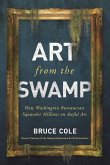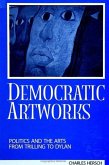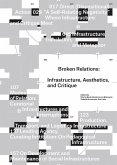The Comprehensive Employment and Training Act made a dramatic entrace on the American economic and social stage in December 1973. No comparable commitment of public funds to subsidize jobs had occurred since the Works Progress Administration programs of the 1930s. An important beneficiary of CETA was the Artists-in-Residence program, in operation from 1977 to 1981. As part of the largest direct monetary transfer to artists since the WPA, AIR employed 108 Chicago-area artists each year in nine fields--from dance and music to video and graphic arts. "Bureaucratizing the Muse" is a study of the Chicago AIR program. By its very nature art is a nonrational process, even at times antirational, and the idea of organizing artists in this kind of work environment was an unusual one. Steven C. Dubin's account is a fascinating story of the tensions between struggling artists who need a paycheck but fear the compromise of their art and bureaucrats who need to produce measurable results.
Hinweis: Dieser Artikel kann nur an eine deutsche Lieferadresse ausgeliefert werden.
Hinweis: Dieser Artikel kann nur an eine deutsche Lieferadresse ausgeliefert werden.








